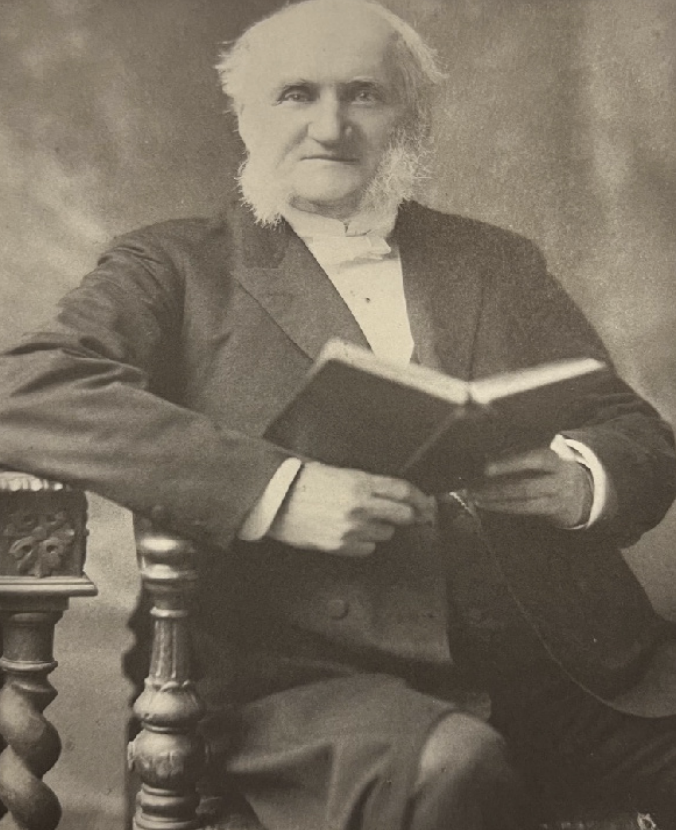Saturday, July 27
The Untold Story of Lawrenceville’s Second Head of School
William Wang ’24 in Features | November 4, 2022

Built in 1814 on land purchased for $25, the Hamill House is the oldest building on campus. In 1885, the building was renamed after Samuel McClintock Hamill, the longest-serving Head of School in Lawrenceville’s history. Born in Norristown, Pennsylvania, Hamill graduated from Washington College in 1834; in Hamill’s senior year, the college’s president persuaded Hamill to apply to Lawrenceville as a Latin and Greek instructor. Initially reluctant, Hamill eventually decided to apply after the president advocated on Hamill’s behalf so that he could teach despite not yet having acquired the required master's degree.
Three years after Hamill was hired, Lawrenceville’s second Head of School, Alexander Hamilton Phillips, sold the School. In addition to the economic pressure from the Panic of 1837, Phillips struggled with both his responsibilities as an educator and a husband. Enrollment had dwindled to 18 students, and Phillips’ wife had been condemned to an asylum in New York until her death. Thus, Hamill became the new owner of Lawrenceville, then aged 25, in 1837. Hamill would then serve as Lawrenceville's Head of School until 1883.
Hamill’s wife, Matilda Green, the daughter of Richard M. Green (one of the School’s trustees), is assumed to have provided the funds for Hamill to purchase the School. Green also played a crucial role in supporting Lawrenceville’s students, many of whom were boarders who ranged from ages 7-13. Later, when the School was refounded under a foundation in memory of Green’s first cousin, John Cleve Green, much of its new buildings were named after the Green family and its associates, including the Edith Memorial Chapel, Woods Memorial Hall, and all of the Circle Houses besides Hamill. Hamill hired his brother, Hugh Hamill, as co-principal. Hugh Hamill, who aided in administrative duties and served as an ordained Presbyterian minister despite being deaf, was known for being much more strict than his compassionate brother.
Hamill renamed the School to The Lawrenceville Classical and Commercial High School to distinguish the School from its surrounding public high schools. During his time as Head of School, Hamill adhered to Victorian principles of diligence, community, family, and Christianity. Some of his beliefs have not stood the test of time here at Lawrenceville:
- “Do not let your pupils sit facing each other.”
- “Corporal punishment is admissible and necessary in a system of school government.”
The School faced a multitude of challenges: many of the teachers were recent college graduates, just like Hamill, who didn’t have the ambition to pursue a career in teaching. Academics focused on memorization, and the School's administration did little to expand subject variety beyond what was expected at the time. Yet many students credited Hamill’s ability as a teacher, mentor, and Head of School to their overall enjoyable experience, with a near-guaranteed admission to Princeton University for all students. Major General Hugh Lenox Scott, former Chief of Staff of the United States Army, remarked, “The strictness, dignity, kindness, and courtesy with which we were always treated by [Samuel] and [Matilda] Hamill gave us a love and respect for them I have never seen equaled in the heads of any school.”
The Hamills focused on developing good manners and social poise among their students; boys were invited to informal social gatherings in the Hamill House’s parlor once per week. These gatherings included games, music, storytelling, singing, and more. In addition, the Hamills developed a large portion of farmland that bordered the School’s grounds to the east of Main Street. By 1846, the School had enrolled 54 boys and employed six faculty members; three years later, enrollment had increased by 14 and required Hamill to be expanded, while the School House, now known as Haskell, was similarly renovated.
Lawrenceville’s improving reputation helped Hamill solidify himself as a preeminent American educator. In addition to being asked to chair a committee to report on the “Whole subject of Instruction and Training” before the National Convention of Public Education in Philadelphia, Hamill also gave an address to the American Association for the Advancement of Education.
Hamill sold the Lawrenceville Classical and Commercial High School to John Cleve Green’s estate in 1879 for $25,000 and resigned his position after the appointment of James Cameron Mackenzie as the new Head of School in 1883. By the time of his departure, social standards surrounding education had changed. The establishment of Episcopal Schools in response to the Second Great Awakening reached its peak and brought with it the idea of educating boys “in the closest possible approximation to that highest type of humanity–the educated Christian gentlemen,” a far cry from Hamill’s vision of Lawrenceville as both a classical and commercial school. Nonetheless, Hamill sustained Lawrenceville in an era marked by uncertainty. In his last commencement address, he remarked, “Instead of hesitating at the prospect of teaching for two years, I am here at the end of almost half a century, having retained in different relations, a continuous connection with the Institution through this long period. So little do men know of what is before them.”
Related Articles
- Faculty Tribute: Jason Leong Micah Kim ’26
- To: Mrs. Buckles, From: The Lawrence CXLIII & CXLIV Jackie Williams ’24
- Field Trips: A Unique Way to Learn Mira Ponnambalam ’26
- A Day for Community Bonding Bunny Henault-Bassett ’26
- Faculty Tribute: Gabrielle Lescadre Nicole Halucka ’26
Recent Articles
- To Edit or Not to Edit Arya Vishwakarma ’25
- Senior Reflection Luke Park ’24
- Senior Reflection Sofia Carlisi ’24
- Reflections on Dance Sonia Singhal ’24
- Field Trips: A Unique Way to Learn Mira Ponnambalam ’26